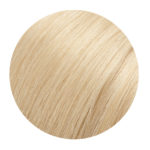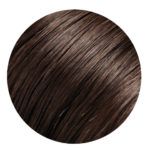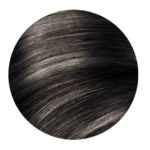Hair extensions are sourced all over the world, however, typically you will find hair sourced from Europe, China, and India. When looking for a new hair extension brand or method, it is important to make sure the hair extension types offered is compatible with your natural hair.

 European hair (Russian) refers to Caucasian hair from the western world, predominantly Russia. In the western world, there are very few women willing to sell their hair, meaning high demand with limited supply and high prices. European hair has a fine denier and has natural light brown and blonde shades, meaning less processing. Not recommended for coarse hair textures, but can be used by hair types other than Caucasian. European hair is naturally silky and shiny and considered to be the highest quality of hair extensions you can buy.
European hair (Russian) refers to Caucasian hair from the western world, predominantly Russia. In the western world, there are very few women willing to sell their hair, meaning high demand with limited supply and high prices. European hair has a fine denier and has natural light brown and blonde shades, meaning less processing. Not recommended for coarse hair textures, but can be used by hair types other than Caucasian. European hair is naturally silky and shiny and considered to be the highest quality of hair extensions you can buy.
 Chinese hair tends to have a thicker follicle than European hair and has little to no curl. Natural state is black or brown, meaning the hair must be bleached to remove the pigment, then deposited with color. As long as the process is done correctly, the hair will not lose its quality after extreme processing. Chinese hair is very strong and flexible and is suitable for most hair textures. Known for being sleek and manageable, while maintaining a naturally straight texture. Unlike Indian hair, it will not become frizzy or wavy in humidity.
Chinese hair tends to have a thicker follicle than European hair and has little to no curl. Natural state is black or brown, meaning the hair must be bleached to remove the pigment, then deposited with color. As long as the process is done correctly, the hair will not lose its quality after extreme processing. Chinese hair is very strong and flexible and is suitable for most hair textures. Known for being sleek and manageable, while maintaining a naturally straight texture. Unlike Indian hair, it will not become frizzy or wavy in humidity.
 Indian hair is one of the most common hair types on the market, as there is a large population of women who regularly donate their hair for religious purposes. Indian hair has a similar texture and density to European hair and is versatile and easy to style. Blends well with most hair types, especially African American hair, and has a light, bouncy feel to it. Although hair tends to become frizzy in moist temperature, high quality Indian Hair will be able to maintain its silky texture with proper care and maintenance. Use of anti-frizz products at the ends is highly recommended.
Indian hair is one of the most common hair types on the market, as there is a large population of women who regularly donate their hair for religious purposes. Indian hair has a similar texture and density to European hair and is versatile and easy to style. Blends well with most hair types, especially African American hair, and has a light, bouncy feel to it. Although hair tends to become frizzy in moist temperature, high quality Indian Hair will be able to maintain its silky texture with proper care and maintenance. Use of anti-frizz products at the ends is highly recommended.
What is Remy Hair?
Remy Hair refers to the manner in which the hair is collected, where the hair has been cut, in such a manner that the root end is distinguishable from the tip end. This guarantee’s that the roots and tips are grouped and aligned in the same direction. In reputable factories, which are few and far between, Remy hair is subject to fewer chemical processes allowing the hair to be more healthy. Cuticle hair, when managed correctly, will not tangle any more than natural long hair. Hair that has had the cuticle removed, will over time become dull, lifeless, dry and will tangle easily. It is important to know that hair with cuticle is a characteristic of Remy hair not the definition; most factories remove the cuticle from the Remy after collection to ensure that the hair is not accidently mixed during manufacturing; now as inversion (cuticle running in different directions). If hair with cuticle is inverted, it will become a tangled knotted mess, especially when wet.
If you don’t know how to test for cuticle, you can use your fingers. Remy hair is expensive and if the price seems too good to be true, then it’s more than likely Non-Remy. Remy hair is well worth the money as it will integrate and perform better with your natural hair. It will be easier to maintain, will last longer and look healthier and more natural than Non-Remy hair, which can look very shiny and artificial when first purchased and become dry and dull over time.
Non-Remy hair, by default is hair that is collect where the tip end cannot be distinguished from the root end. In order to use Non-Remy hair (inverted hair) often referred to as fallen hair by the factories, in the production of wigs and hair extensions, the cuticle has to be removed first. To remove the cuticle, the hair is soaked in large extremely corrosive acid baths which can damage hair permanently. Often factories will use more acid than necessary and leave the hair for longer periods than required to ensure sufficient cuticle has been removed. If they do not remove sufficient cuticle the hair will tangle. A short term trick utilized by the vast majority of manufactures is the use of silicone. Unfortunately the silicone coating washes away causing the hair to become dull, dry and tangled. Most hair extension manufacturers don’t use Remy hair or mix a large percentage of Non-Remy hair with their Remy hair during production and only use true Remy hair for achieve the lightest bleached colors.